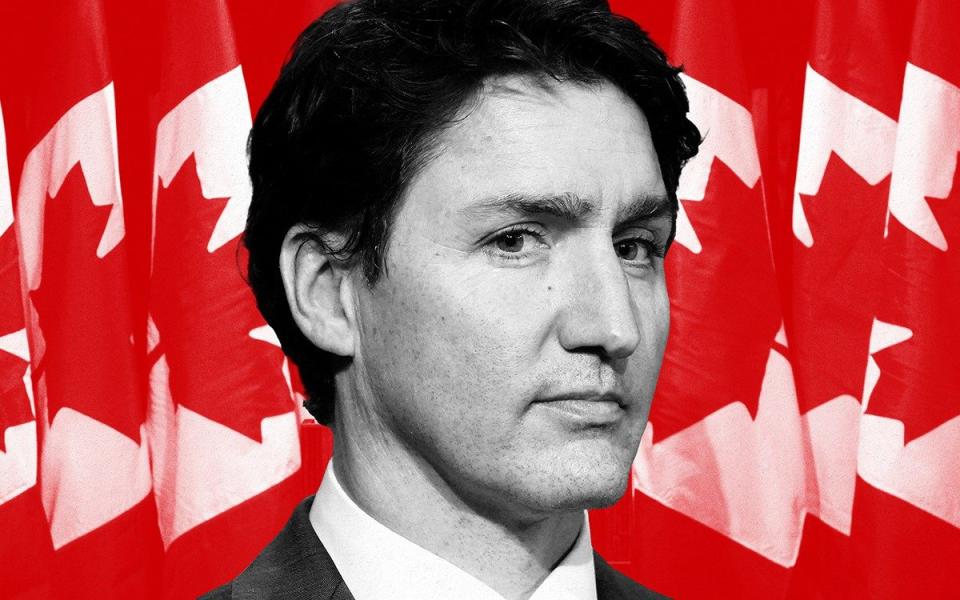How Canada’s energy experiment backfired – and why smart meter Britain is next

As residents of Ontario, Canada, look forward to the arrival of summer after months of sub-zero temperatures, they are advised to think carefully about when to fire up the barbeque.
Between the hours of 11am and 5pm on any given weekday, energy prices are more than double what they are overnight and considerably higher than in the early morning or late afternoon, according to guidance from the Ontario Energy Board, the province’s energy regulator.
When the nation’s most populous province switched over millions of households to dynamic pricing for energy in 2010 – underpinned by a rapidly completed smart meter rollout – officials believed consumers would alter their behaviour accordingly and benefit from cheaper bills.
Every ratepayer was forced to subscribe to one of three time of use (TOU) tariffs which use dynamic prices that are linked to how busy the energy grid is. Smart meters are mandatory so suppliers will always know how much energy a household is using and when.
Only the province’s “tiered” system offers anything resembling a fixed rate deal. Households are allotted a chunk of cheap energy, but when this has been used up, a more expensive rate automatically comes into effect. The third option offers very cheap overnight prices for nighttime workers and electric vehicle (EV) drivers.
But just years after the move, energy prices in Ontario were far higher and consumers had hardly changed the way they consumed energy at all.
Now a similar system could soon be widespread in Britain. Ofgem, the energy regulator, said last month that it was considering reforming the energy price cap to a dynamic model that is linked with real-time wholesale energy costs.
The regulator suggested in a report that Canadian-style TOU tariffs had already benefited consumers in the UK by allowing them to use energy when it was cheaper.
It said: “These tariffs help customers to reduce their bills by avoiding consuming electricity during peak periods, while also reducing suppliers’ wholesale costs.”
‘A mad idea’
However, it remains to be seen whether reforming the energy price cap to become more like these tariffs would succeed in incentivising millions of British consumers to use energy at different times of day when it is cheaper.
Ross Anderson, Professor of Security Engineering at the University of Cambridge, said that Ontario’s system proved to be a “mad idea” that failed to change behaviour en masse.
“People were not prepared to change their electricity consumption to save a few pence. This was always a mad idea that was never ever going to work. People just didn’t care and it didn’t move the needle at all,” he said.

In 2014, four years after TOU was introduced in Ontario, a major review of the project by the Office of the Auditor General of Ontario found that it had failed to significantly bring down household energy consumption during times of day when the energy grid was historically busy.
It compared ratepayers who were moved to TOU with some 77,000 households which kept paying fixed-rate deals already agreed with suppliers, where the per kilowatt hour price of energy remains the same all the time.
“Consumption patterns of retail [fixed] and TOU ratepayers were about the same, suggesting that TOU pricing provided no more incentive to change usage behaviour than retail [fixed] contracts,” it said.
The report concluded that the dynamically priced tariffs had only had a “minor” impact on reducing demand for energy.
Consumers were also said to have complained of increased bills under TOU, while suppliers reported that many had had “limited or no ability to change electricity consumption”, especially small businesses and people who were at home during most of the day.
Even as Ontario raced towards net zero, with almost all of its energy coming from renewable sources by 2019, energy prices leapt.
Customers who paid for hydroelectric power from suppliers saw bills become so expensive that the province’s government was forced to step in and subsidise costs in 2017. TOU pricing was blamed at the time for contributing to increasing costs.
By 2016, Ontarians had seen prices rise 82pc for electricity at the peak billing periods of the day on 2010’s figures, Canadian media reported.
Overall, energy consumption at these times had fallen just 0.7pc despite the government saying it would drop by six times as much, a report by the province’s environmental commissioner found.
Today, the system remains in place. While prices for energy in Ontario were below national average last year, according to StatsCan, Canada’s official statistics agency, the move failed to substantially alter how households consume energy.
Nigel Timperley, of energy analysts LCP Delta, said that dynamic pricing for energy in the UK would be more of a success than in Ontario because the market is more deregulated, allowing greater competition to drive down prices.
“Canada is a very different energy market. It is nowhere near as deregulated as in Europe,” he said. Around half of Ontario’s energy sector is provincially-owned.
“Nobody is mandating TOU tariffs as the only option. Nobody is going to say get rid of the flat rate tariff. What you’ll end up with is a range of options to appeal to different risk appetites.
“It brings better uses of zero carbon sources such as wind and leads to lower average bills for everyone.
“The big winners in this are people who have EVs or heat pumps. I used to spend £150 a month on fuel and now I spend £10 a month on electricity [for an EV],” he added.


 Yahoo Finance
Yahoo Finance 